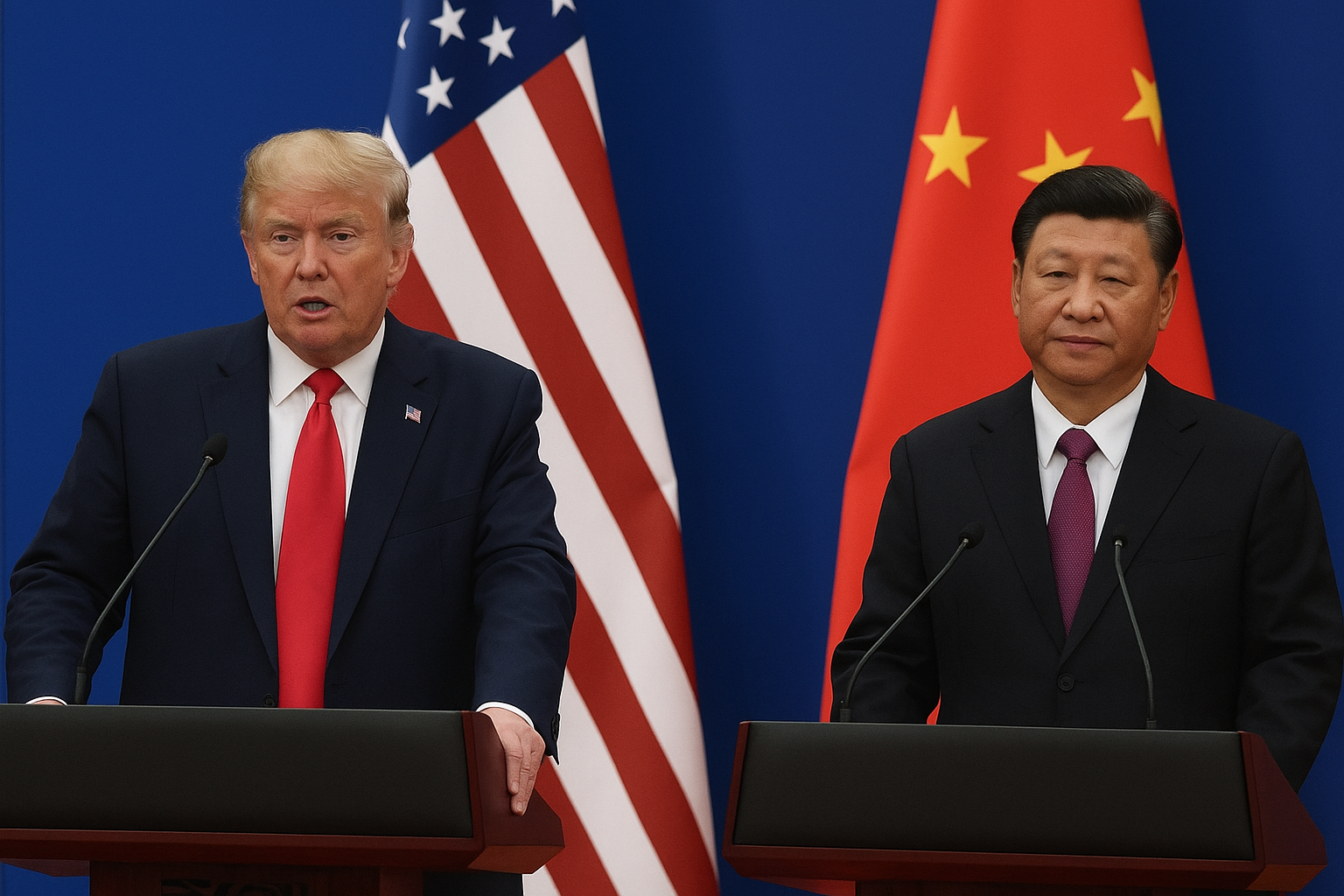Global markets watched closely on Tuesday as U.S. President Donald Trump announced plans to reduce tariffs on Chinese imports tied to fentanyl-precursor enforcement, signaling a potential easing of trade tensions ahead of his high-stakes meeting with Chinese President Xi Jinping. The announcement comes amid renewed dialogue between Washington and Beijing over drug enforcement, trade reciprocity, and agricultural cooperation.
According to Reuters, Trump stated that the U.S. would “roll back targeted tariffs” on select Chinese goods as part of a “reciprocal understanding” related to China’s increased enforcement against fentanyl precursor chemicals — a key issue that has strained bilateral relations for years. At the same time, China’s state-owned agricultural conglomerate COFCO Group purchased three U.S. soybean cargoes, a gesture widely interpreted as a symbol of goodwill before the upcoming summit.
The news sparked cautious optimism in global markets, with U.S. futures ticking higher and Asian currencies strengthening modestly against the dollar in early Wednesday trading.
A Trade Thaw With Strategic Undertones
This move could represent the most tangible step toward stabilizing U.S.-China economic relations since mid-2024. While Trump’s first term saw a series of escalating tariffs on Chinese imports — many tied to technology and manufacturing — this latest announcement reflects a more transactional, issue-based approach to diplomacy.
The White House characterized the decision as “incentive-based,” tying tariff relief to Beijing’s verifiable progress in fentanyl precursor tracking and interdiction. Analysts see this as a pragmatic way to pair domestic political priorities (combating drug flows) with global economic recalibration.
“Markets view this as an incremental positive,” said a senior strategist at Morgan Stanley, quoted by Reuters. “It doesn’t resolve the structural trade imbalance, but it reduces near-term friction and signals a willingness to cooperate — particularly ahead of the Fed’s expected rate cut next week.”
The soybean purchase by COFCO — China’s largest food-trading enterprise — further suggests that Beijing is seeking to restore agricultural trade volumes to pre-2022 levels, a crucial issue for both economies. The U.S. agriculture sector has suffered from fluctuating demand since tariffs were imposed, while China has faced food inflation pressures.
Why This Matters for Investors
For investors, tariff adjustments often create sectoral winners and losers. The immediate beneficiaries of tariff easing are likely to be agriculture, industrial manufacturing, and auto-parts suppliers, which rely on cross-Pacific supply chains. Lower input costs could ease margins for U.S. manufacturers, while soybean producers — especially Archer-Daniels-Midland ($ADM) and Bunge Global ($BG) — may see fresh demand tailwinds.
However, market strategists warn against reading this as a full-scale trade détente. “Framework deals have been announced before, but implementation lags have eroded investor confidence,” notes Barron’s. “The real test will be whether customs enforcement and tariff exemptions actually take effect over the next 90 days.”
Meanwhile, sectors tied to domestic fentanyl enforcement — including biotech and pharmaceutical precursors — may experience regulatory shifts as both countries tighten oversight. This could reshape trade in chemicals and intermediate compounds critical to both the healthcare and manufacturing industries.
Market and Policy Reactions
Financial markets reacted moderately to the news. The S&P 500 futures rose 0.3%, the Dow Jones Industrial Average gained 0.4% in premarket trading, and the offshore yuan (CNH) appreciated to its strongest level in three weeks. Commodity markets also saw a brief uptick, with soybean futures up 1.1% on the Chicago Board of Trade.
Political analysts suggest the move is designed to set a constructive tone before the bilateral summit, expected later this week in Singapore. The U.S.-China relationship remains the most significant geopolitical variable for investors, shaping global supply chains, tech competition, and commodity demand.
“Even a partial thaw in U.S.-China trade tensions can have an outsized effect on investor sentiment,” said one senior economist at the Peterson Institute for International Economics. “Both leaders appear motivated to demonstrate progress — Trump ahead of an election year, and Xi amid slowing domestic growth.”
Future Trends to Watch
- Implementation Timelines: Investors should monitor official guidance from the U.S. Trade Representative (USTR) and China’s Ministry of Commerce for product lists and tariff schedules.
- Agricultural Trade: Any follow-up soybean or corn purchases by China could further boost agricultural equities and ETFs.
- Fed Coordination: A more stable trade environment could give the Federal Reserve greater flexibility in its upcoming rate decisions, potentially supporting equity valuations.
- Geopolitical Dynamics: If the tariff reductions lead to expanded cooperation on technology or energy, sectors such as semiconductors and renewables could experience spillover benefits.
Key Investment Insight
The reduction of fentanyl-linked tariffs is a politically charged yet economically significant step that could soften global risk sentiment and support cyclical sectors. While the move may not redefine U.S.-China relations, it helps de-escalate tensions and restore a measure of trade predictability — both valuable for markets heading into 2026.
For investors, the focus should remain on implementation clarity and sectoral exposure. Agricultural producers, manufacturing supply chains, and logistics companies may see incremental gains, but structural uncertainty persists. Diversified exposure through emerging-market or global-trade ETFs may offer balanced participation in the upside.
Stay with MoneyNews.Today for ongoing coverage of trade, markets, and the political developments shaping global investment flows.





